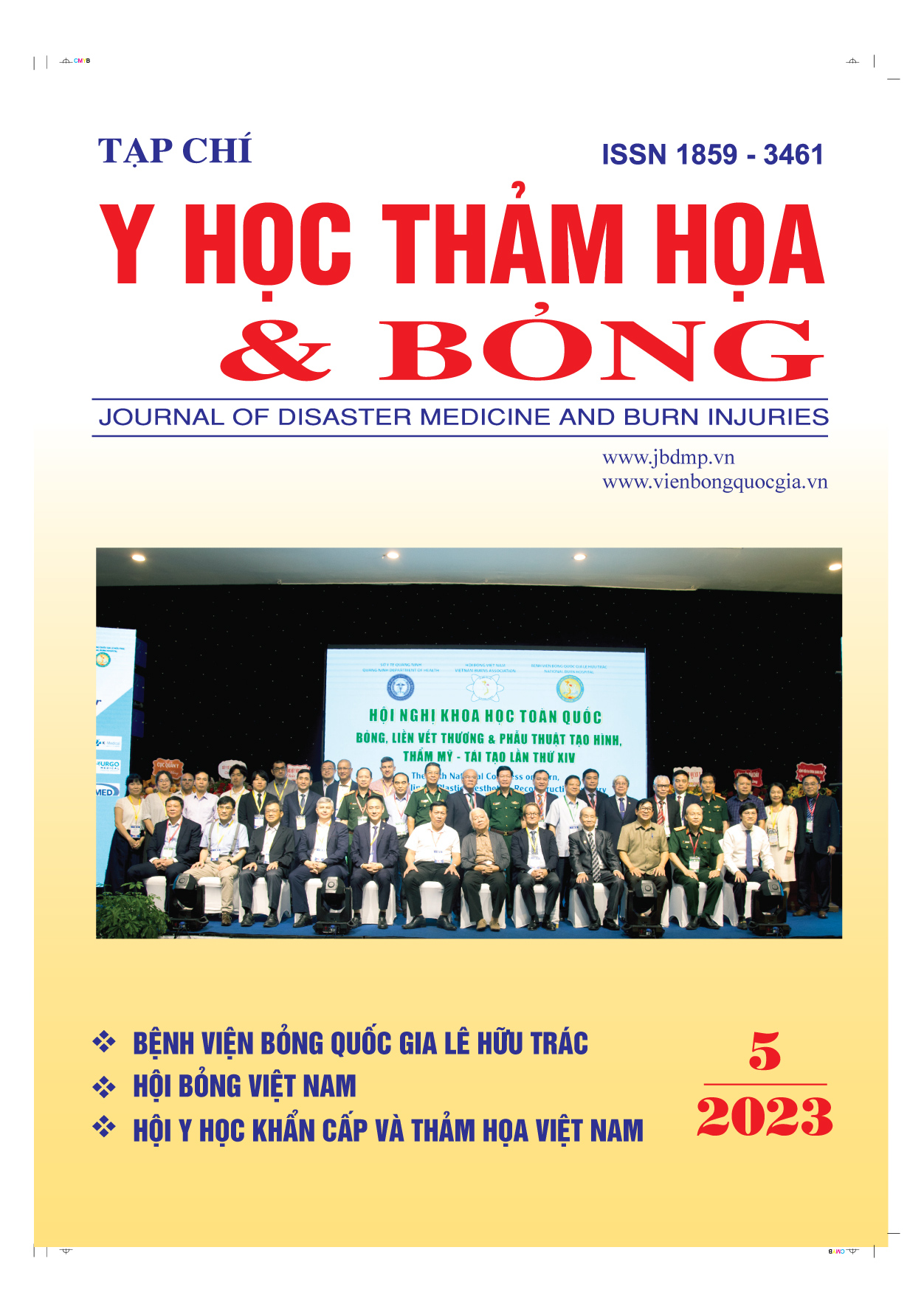Anesthesia on a pediatric patient with a mouth-narrowed adhesive scar caused by a chemical burn
Main Article Content
Abstract
Introduction: Anesthesia for pediatric patients with contracture scars in the maxillofacial area is always challenging for anesthetists because of difficult endotracheal intubation. On November 7th, 2023, we performed anesthesia successfully for a pediatric patient with a severely mouth-narrowed adhesive scar caused by a chemical burn.
Case presentation: Pediatric patient Truong Nguyen Thuy N., female, 31 months old, with the diagnosis “severely mouth-narrowed adhesive scar after chemical burn for 3 months”. On October 26th, 2023, she was admitted to the Center for Plastic, Aesthetic, and Reconstructive Surgery (Le Huu Trac National Burn Hospital) for treatment in the following conditions: consciousness, hemodynamic and respiratory stability, no concomitant diseases, and no history of allergy. The local injury: adhesive scars on both lips causing severely narrowed moth (the maximum diameter of the mouth opening < 0.5cm), diagnosed with endotracheal or laryngeal mask airway (LMA) cannot be achieved directly via the mouth route.
Laboratory test results were as follows: endoscopic nasopharyngeal examination and other subclinical results were in a normal range. Surgical method: Liberate a bilateral contractible scar by means of local flaps. Method of anesthesia: intravenous anesthesia with ketamine combined with local anesthesia in order to incise the mouth scar before inserting LMA to control respiration. During the anesthesia and surgery process, hemodynamics and respiration were stable. After surgery, the patient was conscious and breathed spontaneously. The LMA was then removed, and she was transferred back to the clinical department. During the postoperative period, her condition was stable.
Conclusion: For pediatric patients with difficult endotracheal intubation due to maxillofacial contracture scars, it is necessary to evaluate the airway in a detailed manner to have an optimum anesthetic strategy. Incising the scar to liberate the contracture to facilitate ventilation and airway intervention appears to be an effective approach.
Article Details
Keywords
General anesthesia, neck scar contracture, burn
References
2. TanzerRC. Burn contracture of the neck. Plast Reconstr Surg 1964; 33: 207-212.
3. Bhattacharya S, Bhatnagar SK, Chandra R. Post-burn contracture of the neck - our experience with a new dynamic extension splint. Burns 1991; 17: 65-67.,
4. Kreulen M, Mackie DP, Kreis RW, Groenevelt F. Surgical release for intubation purposes in postburn contractures of the neck. Burns. 1996 Jun;22(4):310-2. doi: 10.1016/0305-4179(95)00138-7. PMID: 8781727.]
5. [Chong-Doo Park1, Hye-Kyoung Lee2, Ji-Yeon Yim2, and Im-Hong Kang2 Anesthetic management for a patient with severe mento-sternal contracture: difficult airway and scarce venous access -A case Korean J Anesthesiol 2013 January 64(1): 61-64 Case Report http://dx.doi.org/10.4097/kjae.2013.64.1.61]
6. Nguyễn Ngọc Thạch (2016), “Đặt ống nội khí quản khó dưới hướng dẫn nội soi khí phế quản sợi mềm ở bệnh nhi sẹo co kéo cằm cổ sau bỏng”. Tạp chí Y học Thảm Họa và Bỏng, số 1, 2017, trang 63-66.


